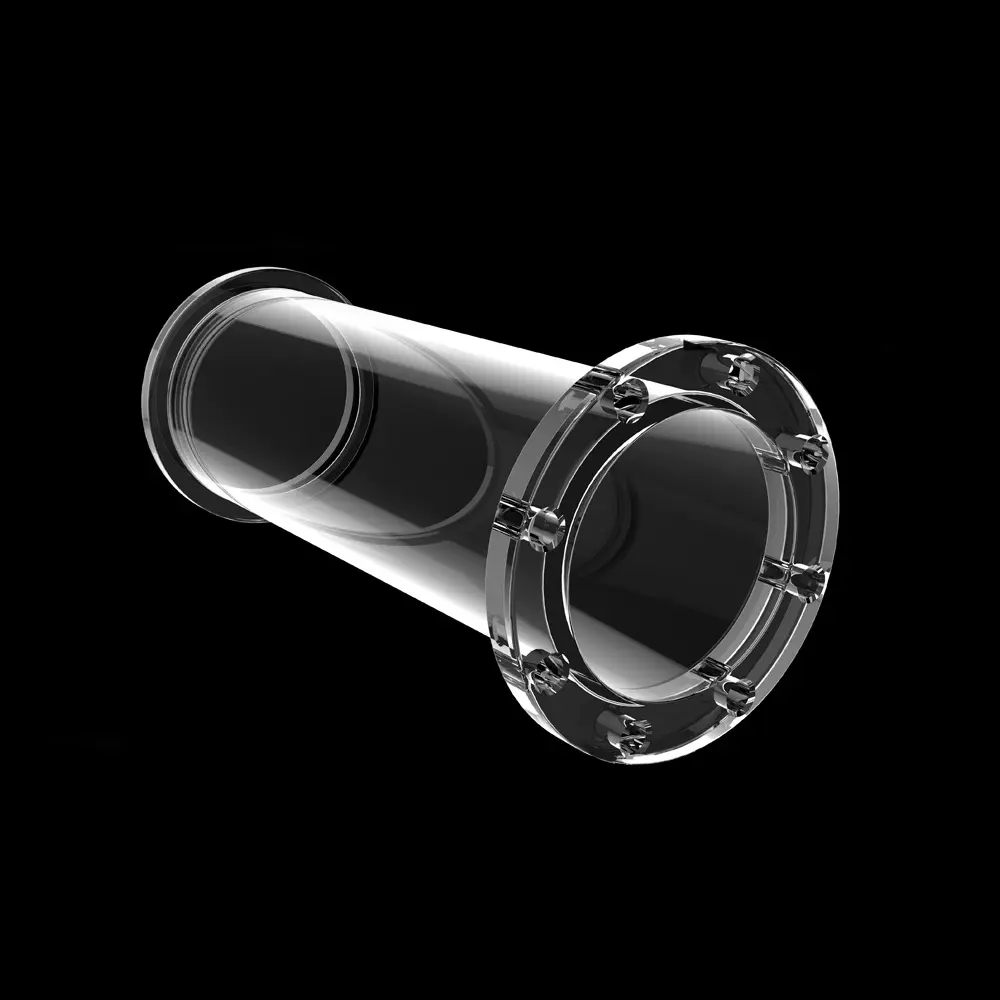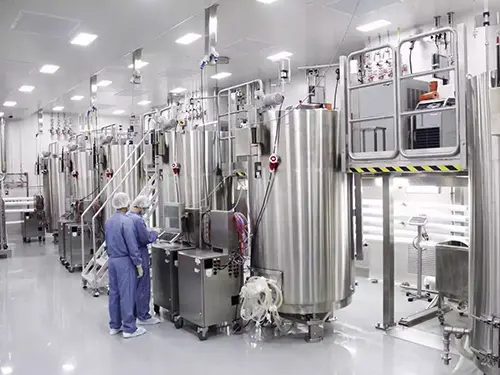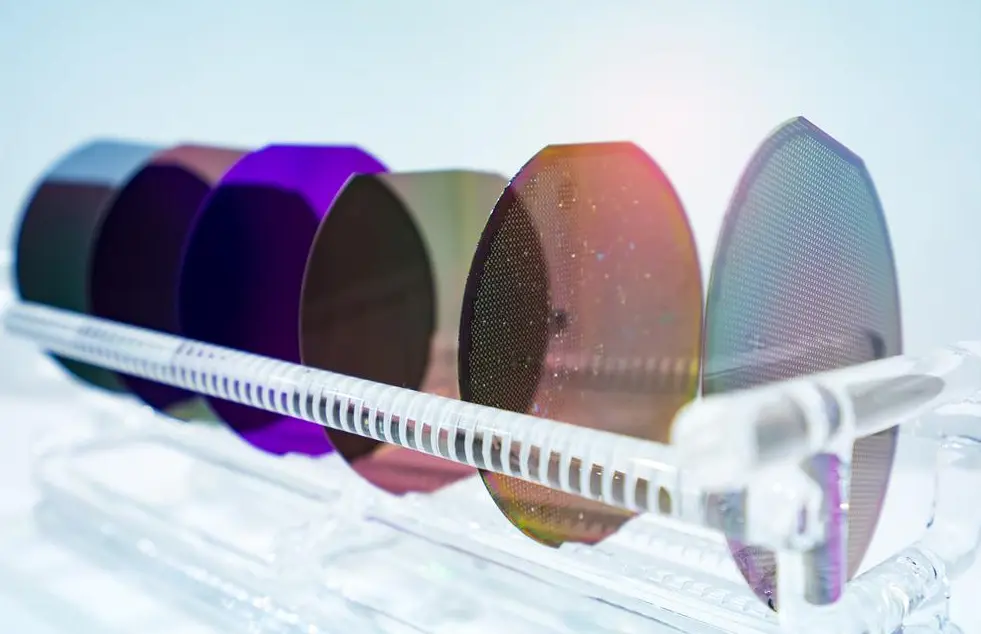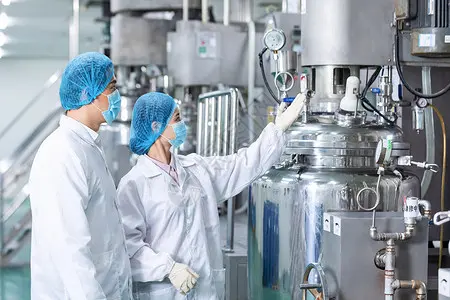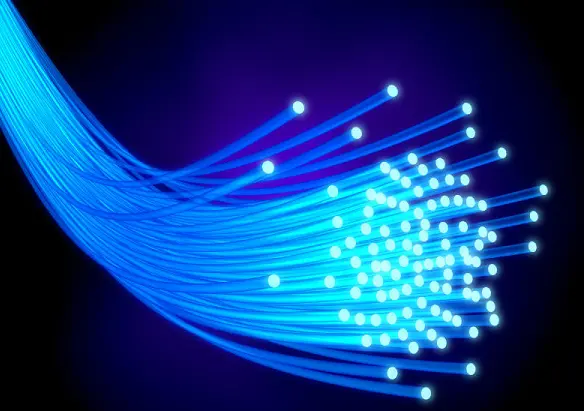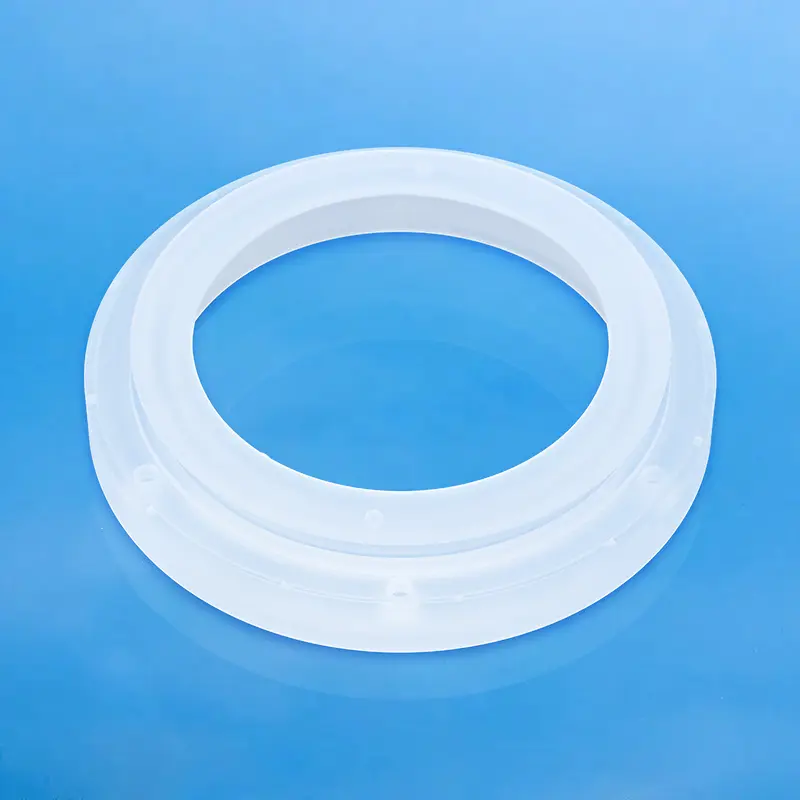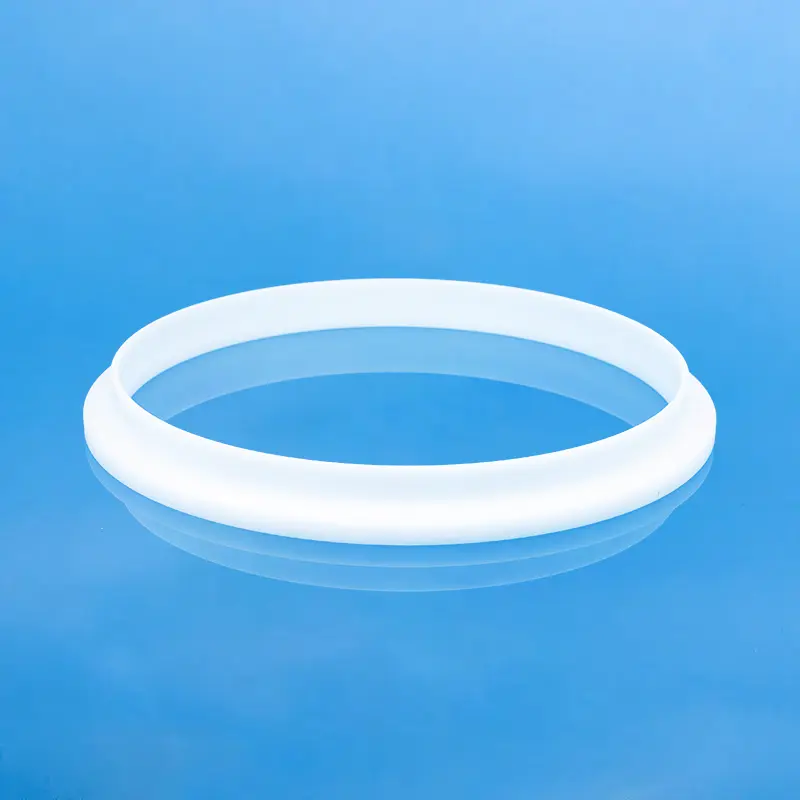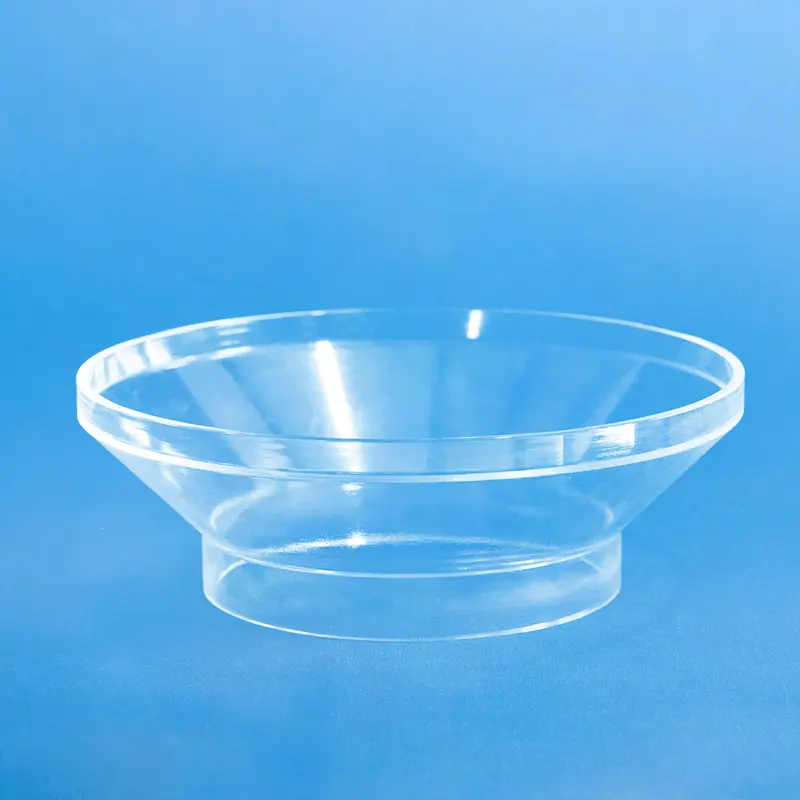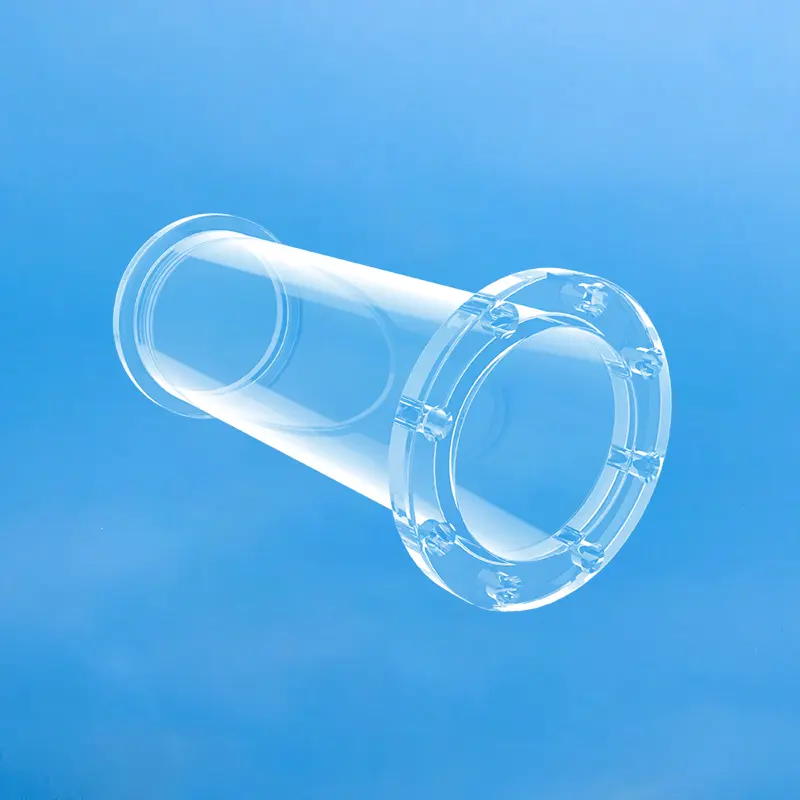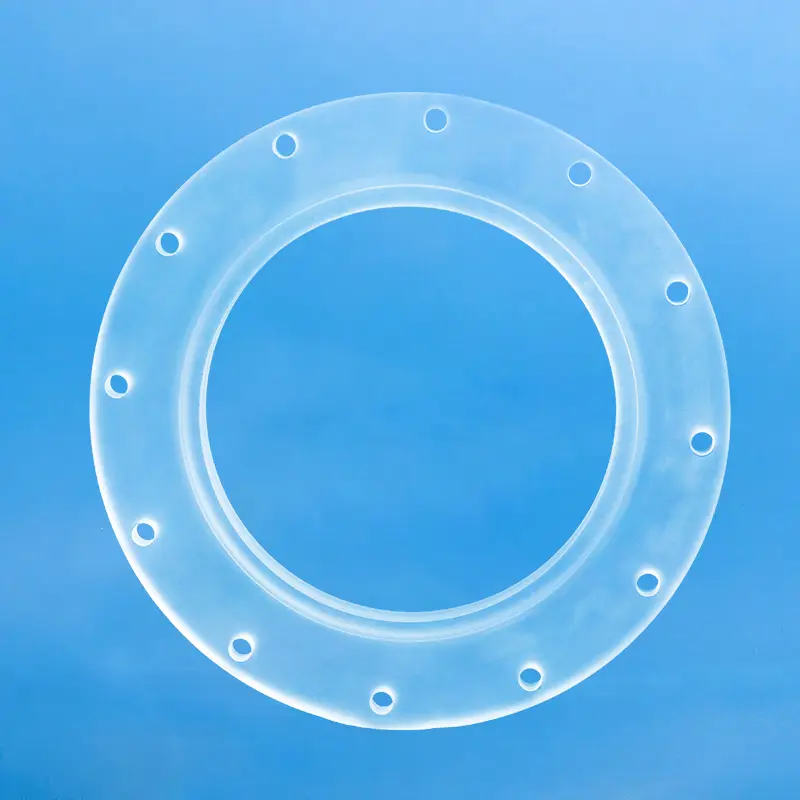Nos tubes à bride en quartz, également connus sous le nom de tuyaux à bride en silice fondue, sont conçus avec précision pour les applications critiques exigeant une pureté extrême, une résistance aux températures élevées et une compatibilité sous vide. Idéaux pour les équipements semi-conducteurs, optiques et de laboratoire, ils garantissent des connexions fiables et résistantes à la corrosion. Des conceptions personnalisées sont disponibles pour répondre à vos spécifications exactes
| Contenu des propriétés | Valeurs des propriétés |
|---|---|
| SiO2 | 99.99% |
| Densité | 2,2×10³ kg/cm³ |
| Dureté | Dureté Mohs de 5,5 à 6,5; Dureté Knoop 570 (sous une charge de 100g) |
| Résistance à la traction | 4,8 × 10⁷ Pa (48 N/mm² ou 48 MPa); 7 000 psi |
| Résistance à la compression | >1.1×10⁹ Pa (160,000 psi) |
| Coefficient de dilatation thermique | 5.5×10⁻⁷ cm/cm·°C (20°C-320°C) |
| Conductivité thermique | 1,4 W/m-°C |
| Chaleur spécifique | 670 J/kg-°C |
| Point de ramollissement | 1730°C (3146°F) |
| Point de recuit | 1210°C (2210°F) |
| Point de contrainte | 1120°C (2048°F) |
| Température de travail | 1200°C (2192°F) |
| Résistivité électrique | 7×10⁷ ohm cm (350°C) |
| Taille | Sur mesure |
| Logo | Personnalisation du logo disponible |
Performances à haute température
Les tuyaux à bride en quartz peuvent supporter des environnements à très haute température, étant généralement adaptés aux applications dépassant 1000°C, ce qui en fait un choix idéal pour les flux de processus à haute température.
Stabilité chimique
Le matériau en quartz présente une excellente résistance à diverses substances chimiques, y compris les acides forts, les bases fortes et les solvants organiques. Cette caractéristique rend les tuyaux à bride en quartz particulièrement utiles dans les industries chimique et pharmaceutique.
Haute pureté et faibles impuretés
Les tuyaux à bride en quartz sont fabriqués à partir de verre de quartz de haute pureté, ce qui signifie qu'ils contiennent de très faibles niveaux d'impuretés. Ceci est crucial pour les applications nécessitant des environnements de haute pureté, telles que la fabrication de semi-conducteurs.
Excellente étanchéité et résistance mécanique
Les tuyaux à bride en quartz sont conçus avec précision pour offrir d'excellentes performances d'étanchéité tout en maintenant une haute résistance mécanique, ce qui leur permet de fonctionner de manière stable dans des environnements à haute pression et de réduire le risque de fuites.
Scénario d'application
Traitement chimique à haute température
Les tuyaux à bride en quartz sont essentiels dans les usines de traitement chimique où les substances corrosives et à haute température sont courantes. Ils sont utilisés dans les réacteurs, les colonnes de distillation et les systèmes de tuyauterie où ils garantissent le transfert et le confinement fiables des produits chimiques agressifs à des températures élevées, par exemple dans la production de produits chimiques de spécialité ou de produits pharmaceutiques.
Salles blanches de fabrication de semi-conducteurs
Les tuyaux à bride en quartz sont utilisés dans les salles blanches de fabrication de semi-conducteurs grâce à leur haute pureté et leurs faibles niveaux d'impuretés. Ils sont idéaux pour le transport des gaz et des liquides lors des étapes de fabrication critiques où toute contamination peut affecter considérablement le produit final. Des exemples incluent des processus comme le dépôt chimique en phase vapeur (CVD) et la gravure où la pureté du système de distribution est cruciale.
Production pharmaceutique de haute pureté
Dans l'industrie pharmaceutique, les tuyaux à bride en quartz sont cruciaux pour le transfert d'ingrédients pharmaceutiques hautement sensibles et corrosifs. Leur inertie chimique garantit que les matériaux ne réagissent pas avec les médicaments ni ne les contaminent, tandis que leur stabilité à haute température permet les processus de stérilisation, assurant les normes de pureté et de sécurité les plus élevées dans la production de médicaments.
Production de fibre optique
Dans la production de câbles à fibre optique, les tuyaux à bride en quartz sont utilisés pour transférer des gaz et des matériaux de haute pureté à des températures élevées. L'environnement contrôlé nécessaire à la production de fibre optique bénéficie de la résistance du quartz aux hautes températures et aux produits chimiques, ainsi que de sa pureté, garantissant que les fibres résultantes répondent aux normes exigeantes de transmission du signal.
Les tubes à brides en quartz offrent plusieurs avantages clés, notamment une résistance exceptionnelle aux hautes températures (dépassant typiquement 1000°C), une excellente stabilité chimique face à une large gamme de substances corrosives, une haute pureté et une faible teneur en impuretés idéales pour les applications sensibles, ainsi qu'une étanchéité et une résistance mécanique supérieures pour des performances fiables sous pression. Ces propriétés les rendent idéaux pour les environnements exigeants où les matériaux traditionnels peuvent échouer.
Les tubes à brides en quartz sont couramment utilisés dans des industries telles que le traitement chimique, la fabrication pharmaceutique, la fabrication de semi-conducteurs et la production de fibres optiques. Dans les usines de traitement chimique, ils gèrent les produits chimiques corrosifs et les environnements à haute température. Dans la fabrication de semi-conducteurs, leur haute pureté empêche la contamination des composants électroniques sensibles. Dans la production pharmaceutique et de fibres optiques, leur inertie chimique et leur résistance à la température sont cruciales pour maintenir la qualité et l'intégrité du processus.
La durée de vie prévue des tubes à brides en quartz dépend de divers facteurs tels que la température de fonctionnement, la pression, l'exposition aux produits chimiques et les procédures de manipulation. Avec une utilisation appropriée et une inspection régulière, les tubes à brides en quartz peuvent avoir une longue durée de vie. L'entretien courant devrait inclure la vérification des fissures, de l'usure ou de la contamination, et le nettoyage des tubes si nécessaire. En fonction de l'environnement spécifique et de l'utilisation, un calendrier de remplacement devrait être établi pour garantir une performance fiable continue.
Questions fréquemment posées
Nous sommes spécialisés dans la fabrication intégrée de composants en verre de quartz de haute pureté. Nos principales gammes de produits comprennent :
Tubes et barres de quartz: Une large gamme de diamètres et de spécifications.
Plaques et disques de quartz: Découpés et polis avec précision pour usages optiques et industriels.
Verrerie de laboratoire en quartz: Une gamme complète de verrerie standard et sur mesure, incluant béchers, fioles et nacelles.
Quartz de qualité semi-conducteur: Composants de haute pureté tels que les tubes de traitement et les porteurs pour la fabrication de semi-conducteurs.
Composants fabriqués sur mesure: Nous pouvons produire des pièces complexes adaptées à vos conceptions et spécifications uniques.
Oui. La fabrication sur mesure est au cœur de notre activité. Forts de plus d'une décennie d'expérience spécialisée, nous nous associons à des entreprises pour leur offrir des services OEM/ODM experts. Nos capacités incluent le soudage, la rectification, le perçage, le polissage, le pliage et d'autres techniques d'usinage de précision, afin de créer des composants qui répondent précisément à vos exigences.
La qualité est primordiale dans notre processus de fabrication. Nous sommes un fabricant certifié ISO 9001:2015, garantissant que nos processus répondent aux normes internationales de gestion de la qualité.Nos produits subissent également des tests SGS rigoureux pour leur pureté et leurs performances. Nous utilisons des matières premières de haute pureté (jusqu'à 99,998% de SiO2) pour produire des articles en quartz fondu et en silice fondue dotés d'une stabilité thermique exceptionnelle, d'une résistance aux températures élevées et d'une inertie chimique.
Nous avons rationalisé notre processus pour qu'il soit le plus efficace possible :
Soumettez votre demande de devis (RFQ) : Envoyez-nous vos dessins techniques, spécifications et exigences via notre formulaire de contact sur le site web ou par e-mail.
Réponse rapide : Vous pouvez vous attendre à une première réponse en quelques minutes et à une communication détaillée dans la demi-heure.
Conception & Proposition : Nous vous soumettrons une proposition de conception détaillée et un devis compétitif sous 24 heures.
Prototypage & Production : Dès approbation, nous passons rapidement du prototypage à la production à grande échelle afin de respecter vos délais.
Un partenariat avec Aoxin Quartz offre plusieurs avantages clés :
Expertise avérée : Avec plus de 10 ans d'expérience dans l'industrie, nous possédons les connaissances techniques nécessaires pour relever les défis complexes.
One-Stop Solution: We manage the entire production process, from sourcing high-purity raw materials to fabricating and finishing complex components.
Valeur compétitive : Situés dans un pôle majeur de production de quartz, nous tirons parti d'une chaîne d'approvisionnement efficace et d'une fabrication avancée pour offrir une qualité exceptionnelle à un prix compétitif.</span
Dedicated Partnership: Over 90% of our clients become long-term partners. We are committed to your success through responsive service, reliable quality, and innovative solutions.

